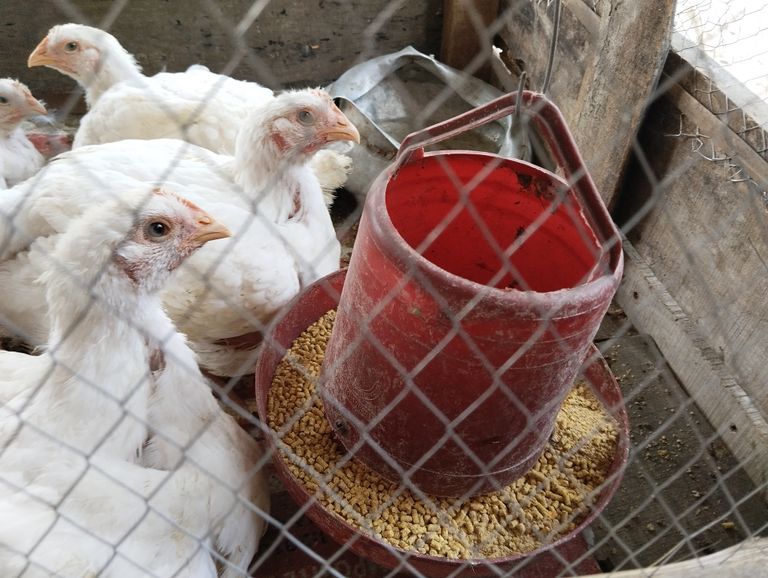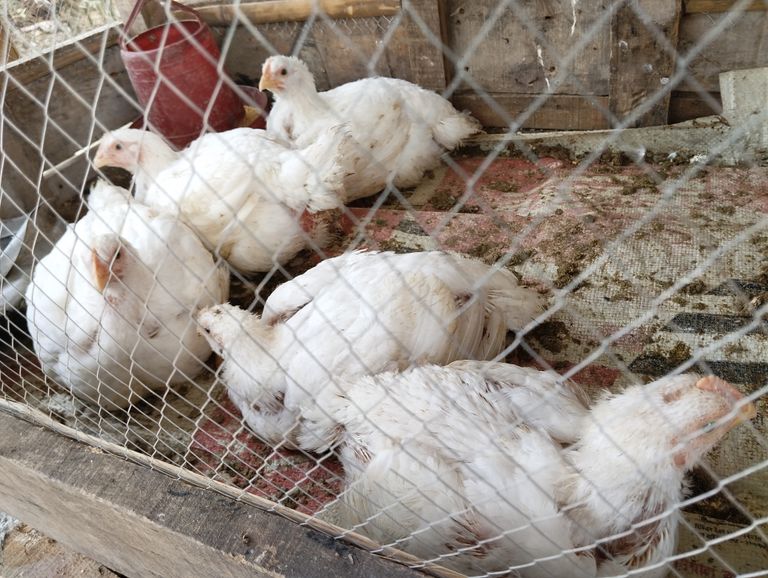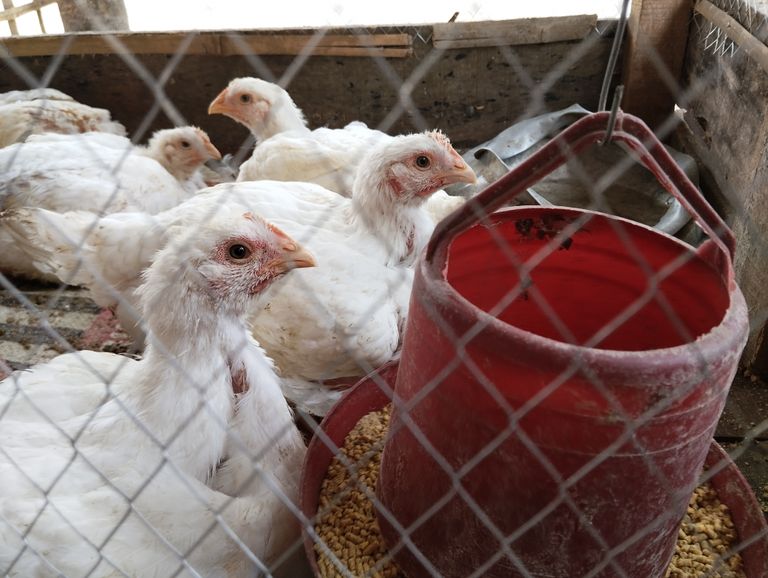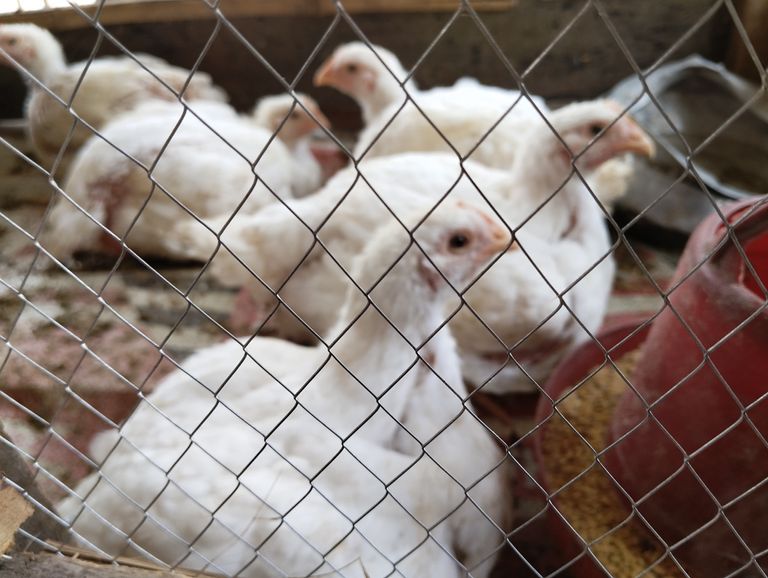
Broiler Chicken Farming A Comprehensive Guide.
Broiler chicken farming is one of the most lucrative agribusinesses worldwide. With the increasing demand for poultry meat, raising broiler chickens can be a profitable venture if managed properly. This guide covers everything you need to know about broiler farming, from selecting the right breed to marketing the final product.
Understanding Broiler Chickens
Broiler chickens are specifically bred for meat production. They grow rapidly and are typically ready for market within 5 to 7 weeks. Common broiler breeds include Cobb 500, Ross 308, and Arbor Acres, known for their fast growth rate and high feed efficiency.
Setting Up a Broiler Farm
- Housing System: A well-ventilated and spacious poultry house is essential. Deep litter systems and cage systems are popular choices. Ensure proper lighting, temperature control, and sanitation.
- Equipment Needed: Feeders, waterers, heating systems (brooders), ventilation fans, and waste disposal systems are crucial for efficient farming.
- Biosecurity Measures: Prevent diseases by maintaining strict hygiene, controlling visitors, and vaccinating the birds regularly.
Feeding and Nutrition
Proper nutrition is key to achieving high growth rates in broiler chickens.
Starter Feed (0-10 days): High-protein feed (22-24%) to support early growth.
Grower Feed (11-25 days): Moderate protein (20-22%) to maintain steady growth.
Finisher Feed (26 days onward): Slightly lower protein (18-20%) to enhance meat production.
Water Supply: Clean and fresh water should be available at all times.
Disease Prevention and Management
Broilers are susceptible to diseases such as Newcastle disease, coccidiosis, and infectious bronchitis. Preventive measures include:
Vaccination Schedule: Follow a proper vaccination plan recommended by a veterinarian.
Sanitation: Clean and disinfect the poultry house regularly.
Proper Ventilation: Ensures fresh air circulation and reduces respiratory diseases.
Marketing and Profitability
Once the broilers reach the desired weight (usually 2-2.5 kg), they are ready for sale. Marketing strategies include:
Direct Sales to Consumers: Selling directly to households or retailers.
Supplying to Restaurants and Hotels: Bulk supply to food businesses.
Contract Farming: Partnering with large poultry processors for assured sales.
Challenges in Broiler Farming
High Feed Costs: Feed constitutes a major portion of the expenses.
Disease Outbreaks: Can lead to significant losses if not managed properly.
Market Fluctuations: Prices of broiler meat can vary, affecting profitability.
Conclusion
Broiler farming, when done with proper planning and management, can be a highly profitable business. By ensuring good housing, proper feeding, and effective disease control, farmers can maximize their yield and revenue. Whether for small-scale or large-scale farming, broiler chickens remain a great investment in the poultry industry. I've created a detailed blog on broiler chicken farming. Let me know if you need any modifications or additional details

The Benefits of Eating Broiler Chicken Meat
Broiler chicken is one of the most popular sources of protein worldwide. It is widely consumed due to its affordability, availability, and versatility in cooking. Many people prefer broiler chicken over other meats because of its nutritional value and health benefits. In this blog, we will explore the numerous benefits of eating broiler chicken meat.
- High in Protein
Protein is essential for the growth, repair, and maintenance of body tissues. Broiler chicken is a rich source of high-quality protein, which helps build muscles, strengthen bones, and support overall bodily functions. Consuming adequate protein also aids in weight management by keeping you full for longer.
- Low in Fat (When Prepared Correctly)
While broiler chicken contains fat, it is lower in unhealthy saturated fats compared to red meats like beef and pork. If you opt for skinless chicken and prepare it using healthy cooking methods such as grilling, boiling, or baking, you can enjoy a nutritious meal without excessive fat intake.
- Rich in Essential Vitamins and Minerals
Broiler chicken provides essential vitamins and minerals, including:
Vitamin B6 and B12: These vitamins support brain function, improve mood, and aid in red blood cell production.
Niacin (Vitamin B3): Helps maintain healthy skin, improves digestion, and supports cardiovascular health.
Phosphorus: Crucial for bone and teeth health.
Selenium: An antioxidant that strengthens the immune system and helps prevent chronic diseases.
- Boosts Immunity
Chicken, especially in the form of soup, is known to boost the immune system. It contains nutrients and amino acids that help fight infections, reduce inflammation, and promote overall wellness.
- Supports Heart Health
When consumed in moderation, lean broiler chicken meat can contribute to a healthy heart. The presence of niacin and vitamin B6 helps regulate cholesterol levels and reduce the risk of heart disease.
- Helps in Weight Management
For those aiming to lose weight or maintain a healthy weight, broiler chicken is an excellent choice. It is low in calories yet high in protein, helping to reduce appetite and prevent overeating. Including chicken in a balanced diet can aid in fat loss and muscle retention.
- Easy to Digest
Broiler chicken is soft and easy to digest, making it suitable for people of all ages, including children and the elderly. It is often recommended for individuals recovering from illness due to its mild texture and high nutritional content.
- Affordable and Widely Available
Compared to other protein sources such as beef, mutton, or fish, broiler chicken is more affordable and readily available. This makes it an excellent option for people looking for a budget-friendly yet nutritious meal.
Conclusion
Broiler chicken is a nutritious and convenient protein source with several health benefits. It is rich in essential nutrients, supports immunity, aids in weight management, and contributes to overall well-being. To maximize its health benefits, opt for healthy cooking methods like grilling, baking, or steaming while avoiding excessive oil and seasonings. Including broiler chicken as part of a balanced diet can help you enjoy a healthier lifestyle while relishing delicious meals.
I've written a blog on the benefits of eating broiler chicken meat. Let me know if you want any modifications or additions.

Common Diseases in Broiler Chickens: Causes, Symptoms, and Prevention
Broiler chickens are a popular choice for poultry farmers due to their rapid growth and high meat yield. However, they are also susceptible to various diseases that can impact their health and productivity. Understanding these diseases, their causes, symptoms, and prevention methods is crucial for maintaining a healthy flock. This blog provides a comprehensive guide on common broiler chicken diseases and how to manage them effectively.
- Newcastle Disease (ND)
Newcastle Disease is a highly contagious viral infection affecting the respiratory, nervous, and digestive systems of broiler chickens.
Causes: Paramyxovirus
Symptoms: Sneezing, coughing, nasal discharge, twisted neck, paralysis, and drop in egg production.
Prevention: Vaccination, strict biosecurity measures, and avoiding contact with infected birds.
- Infectious Bursal Disease (IBD/Gumboro)
This viral disease mainly affects young broilers, leading to immunosuppression and secondary infections.
Causes: Birnavirus
Symptoms: Ruffled feathers, lethargy, watery diarrhea, and swollen bursa.
Prevention: Vaccination and maintaining strict hygiene in poultry houses.
- Avian Influenza (Bird Flu)
Avian Influenza is a serious viral disease that can lead to high mortality rates in broiler farms.
Causes: Influenza A virus
Symptoms: Swollen head, respiratory distress, sudden death, and cyanotic combs.
Prevention: Biosecurity, vaccination (if applicable), and immediate culling of infected birds.
- Coccidiosis
Coccidiosis is a parasitic disease caused by protozoa affecting the intestines of broiler chickens.
Causes: Eimeria species
Symptoms: Bloody diarrhea, weight loss, lethargy, and decreased feed intake.
Prevention: Using anticoccidial feed additives, maintaining dry litter, and practicing good hygiene.
- Marek’s Disease
This is a viral disease that primarily affects young chickens, causing tumors and paralysis.
Causes: Herpesvirus
Symptoms: Leg and wing paralysis, weight loss, and grayish eye discoloration.
Prevention: Vaccination at hatchery level and good biosecurity practices.
- Salmonellosis
A bacterial infection that can cause serious health problems in both birds and humans through contaminated meat.
Causes: Salmonella bacteria
Symptoms: Diarrhea, dehydration, reduced growth rate, and lethargy.
Prevention: Providing clean water, good hygiene, and using probiotics or antibiotics as prescribed by veterinarians.
- Fowl Pox
A slow-spreading viral disease that affects the skin and respiratory system of chickens.
Causes: Avipoxvirus
Symptoms: Scabby lesions on the skin, difficulty breathing, and reduced growth rate.
Prevention: Vaccination and controlling mosquitoes, which spread the virus.
- E. coli Infections (Colibacillosis)
A bacterial disease that affects broiler chickens, often secondary to other infections.
Causes: Escherichia coli
Symptoms: Swollen joints, respiratory distress, diarrhea, and mortality.
Prevention: Good biosecurity, proper litter management, and clean drinking water.
- Chronic Respiratory Disease (CRD)
A common respiratory disease in broilers that affects their overall performance and meat quality.
Causes: Mycoplasma gallisepticum
Symptoms: Nasal discharge, coughing, decreased weight gain, and poor feed conversion.
Prevention: Maintaining ventilation, reducing stress, and using antibiotics under veterinary guidance.
- Aspergillosis
A fungal infection affecting the respiratory system of broiler chickens.
Causes: Aspergillus fungi
Symptoms: Gasping for air, poor growth, and lethargy.
Prevention: Using dry bedding, proper ventilation, and avoiding moldy feed.
General Prevention Strategies for Broiler Diseases
- Vaccination: Follow a proper vaccination schedule to protect against viral diseases.
- Biosecurity Measures: Limit farm access, disinfect equipment, and prevent contact with wild birds.
- Proper Nutrition: Provide balanced feed to enhance immunity and overall health.
- Hygiene and Sanitation: Keep poultry houses clean, dry, and well-ventilated.
- Regular Health Checks: Monitor birds for early signs of disease and take prompt action.
Conclusion
Managing broiler chicken diseases requires a combination of good biosecurity, proper nutrition, vaccination, and regular health monitoring. By implementing these strategies, poultry farmers can minimize disease outbreaks and ensure a healthy, productive flock. A proactive approach to disease prevention not only reduces economic losses but also promotes sustainable poultry farming. I've created a comprehensive blog on common broiler chicken diseases, including their causes, symptoms, and prevention. Let me know if you need any modifications or additional details.

Common Diseases in Broiler Chickens: Causes, Symptoms, and Prevention
Broiler chickens are a popular choice for poultry farmers due to their rapid growth and high meat yield. However, they are also susceptible to various diseases that can impact their health and productivity. Understanding these diseases, their causes, symptoms, and prevention methods is crucial for maintaining a healthy flock. This blog provides a comprehensive guide on common broiler chicken diseases and how to manage them effectively.
- Newcastle Disease (ND)
Newcastle Disease is a highly contagious viral infection affecting the respiratory, nervous, and digestive systems of broiler chickens.
Causes: Paramyxovirus
Symptoms: Sneezing, coughing, nasal discharge, twisted neck, paralysis, and drop in egg production.
Prevention: Vaccination, strict biosecurity measures, and avoiding contact with infected birds.
- Infectious Bursal Disease (IBD/Gumboro)
This viral disease mainly affects young broilers, leading to immunosuppression and secondary infections.
Causes: Birnavirus
Symptoms: Ruffled feathers, lethargy, watery diarrhea, and swollen bursa.
Prevention: Vaccination and maintaining strict hygiene in poultry houses.
- Avian Influenza (Bird Flu)
Avian Influenza is a serious viral disease that can lead to high mortality rates in broiler farms.
Causes: Influenza A virus
Symptoms: Swollen head, respiratory distress, sudden death, and cyanotic combs.
Prevention: Biosecurity, vaccination (if applicable), and immediate culling of infected birds.
- Coccidiosis
Coccidiosis is a parasitic disease caused by protozoa affecting the intestines of broiler chickens.
Causes: Eimeria species
Symptoms: Bloody diarrhea, weight loss, lethargy, and decreased feed intake.
Prevention: Using anticoccidial feed additives, maintaining dry litter, and practicing good hygiene.
- Marek’s Disease
This is a viral disease that primarily affects young chickens, causing tumors and paralysis.
Causes: Herpesvirus
Symptoms: Leg and wing paralysis, weight loss, and grayish eye discoloration.
Prevention: Vaccination at hatchery level and good biosecurity practices.
- Salmonellosis
A bacterial infection that can cause serious health problems in both birds and humans through contaminated meat.
Causes: Salmonella bacteria
Symptoms: Diarrhea, dehydration, reduced growth rate, and lethargy.
Prevention: Providing clean water, good hygiene, and using probiotics or antibiotics as prescribed by veterinarians.
- Fowl Pox
A slow-spreading viral disease that affects the skin and respiratory system of chickens.
Causes: Avipoxvirus
Symptoms: Scabby lesions on the skin, difficulty breathing, and reduced growth rate.
Prevention: Vaccination and controlling mosquitoes, which spread the virus.
- E. coli Infections (Colibacillosis)
A bacterial disease that affects broiler chickens, often secondary to other infections.
Causes: Escherichia coli
Symptoms: Swollen joints, respiratory distress, diarrhea, and mortality.
Prevention: Good biosecurity, proper litter management, and clean drinking water.
- Chronic Respiratory Disease (CRD)
A common respiratory disease in broilers that affects their overall performance and meat quality.
Causes: Mycoplasma gallisepticum
Symptoms: Nasal discharge, coughing, decreased weight gain, and poor feed conversion.
Prevention: Maintaining ventilation, reducing stress, and using antibiotics under veterinary guidance.
- Aspergillosis
A fungal infection affecting the respiratory system of broiler chickens.
Causes: Aspergillus fungi
Symptoms: Gasping for air, poor growth, and lethargy.
Prevention: Using dry bedding, proper ventilation, and avoiding moldy feed.
General Prevention Strategies for Broiler Diseases
- Vaccination: Follow a proper vaccination schedule to protect against viral diseases.
- Biosecurity Measures: Limit farm access, disinfect equipment, and prevent contact with wild birds.
- Proper Nutrition: Provide balanced feed to enhance immunity and overall health.
- Hygiene and Sanitation: Keep poultry houses clean, dry, and well-ventilated.
- Regular Health Checks: Monitor birds for early signs of disease and take prompt action.
Conclusion
Managing broiler chicken diseases requires a combination of good biosecurity, proper nutrition, vaccination, and regular health monitoring. By implementing these strategies, poultry farmers can minimize disease outbreaks and ensure a healthy, productive flock. A proactive approach to disease prevention not only reduces economic losses but also promotes sustainable poultry farming.
I've created a comprehensive blog on common broiler chicken diseases, including their causes, symptoms, and prevention. Let me know if you need any modifications or additional details.